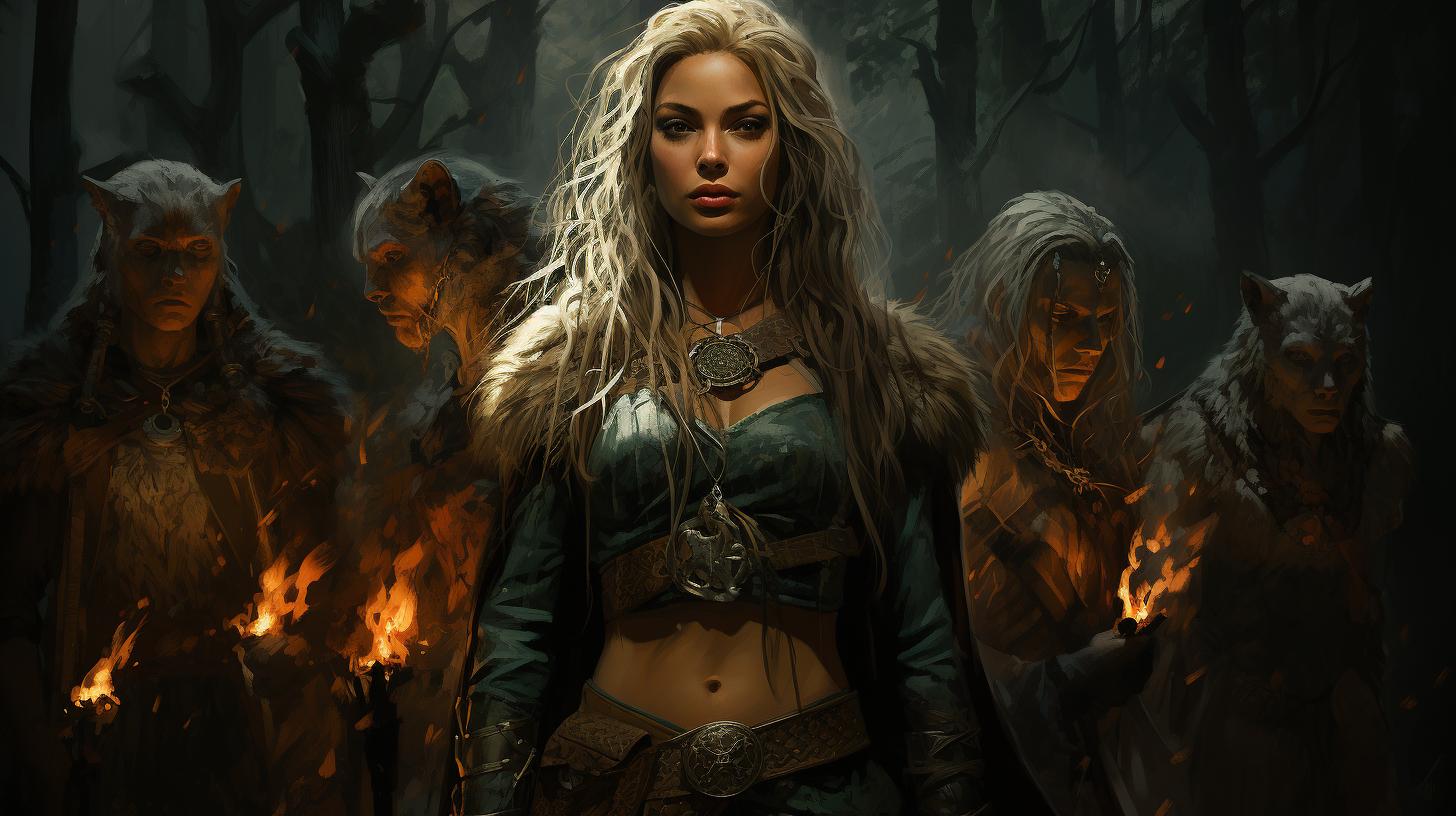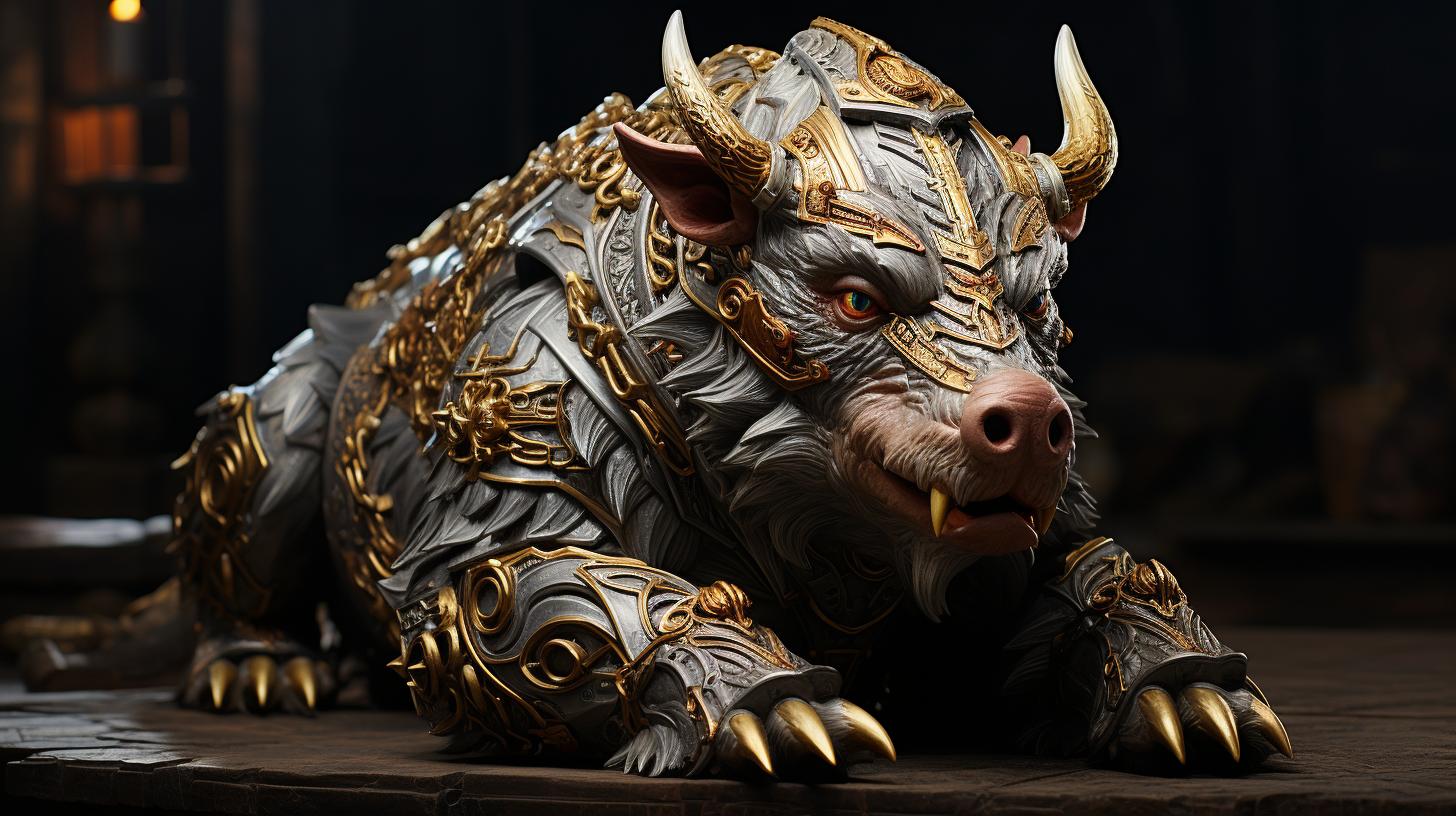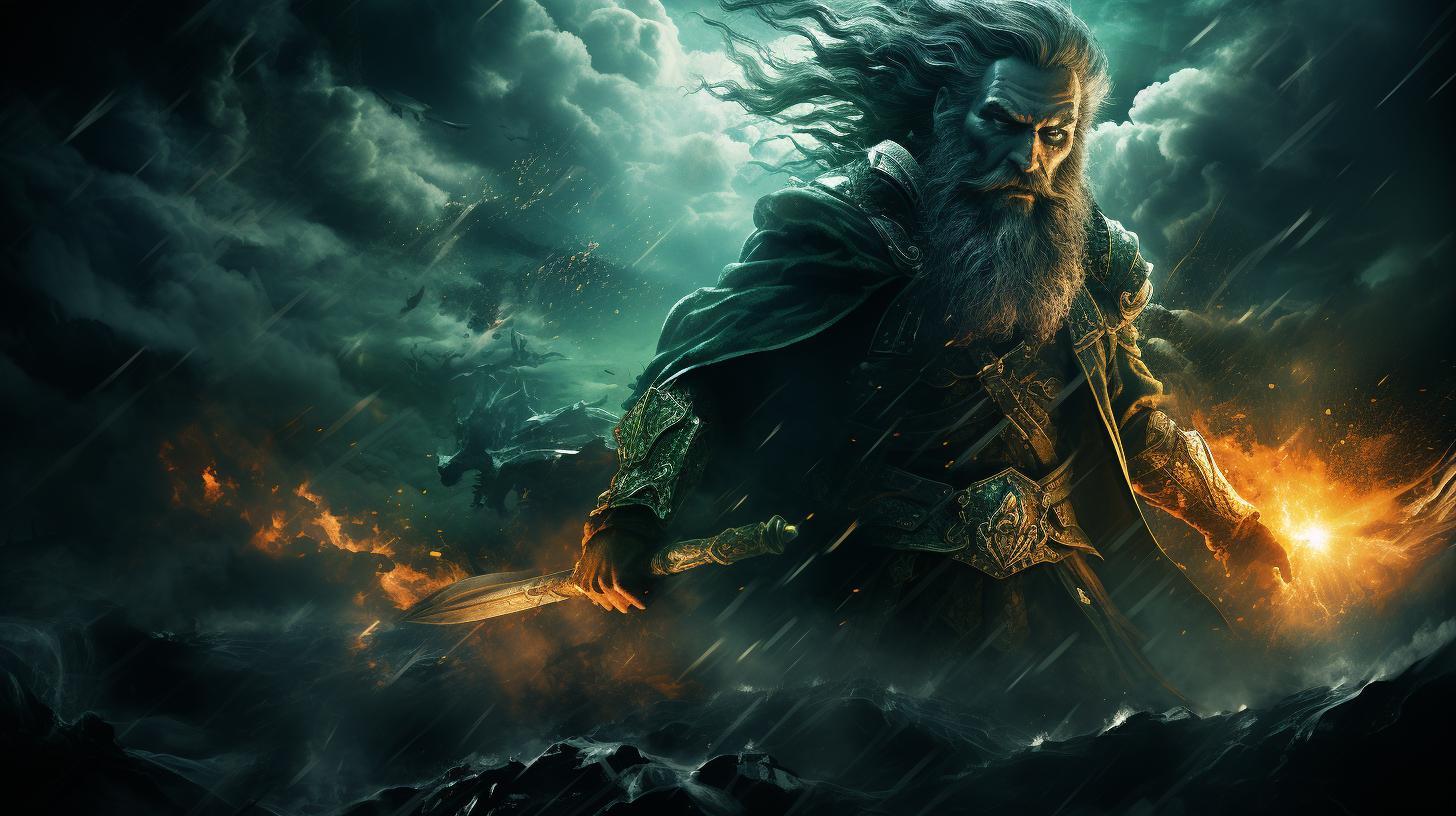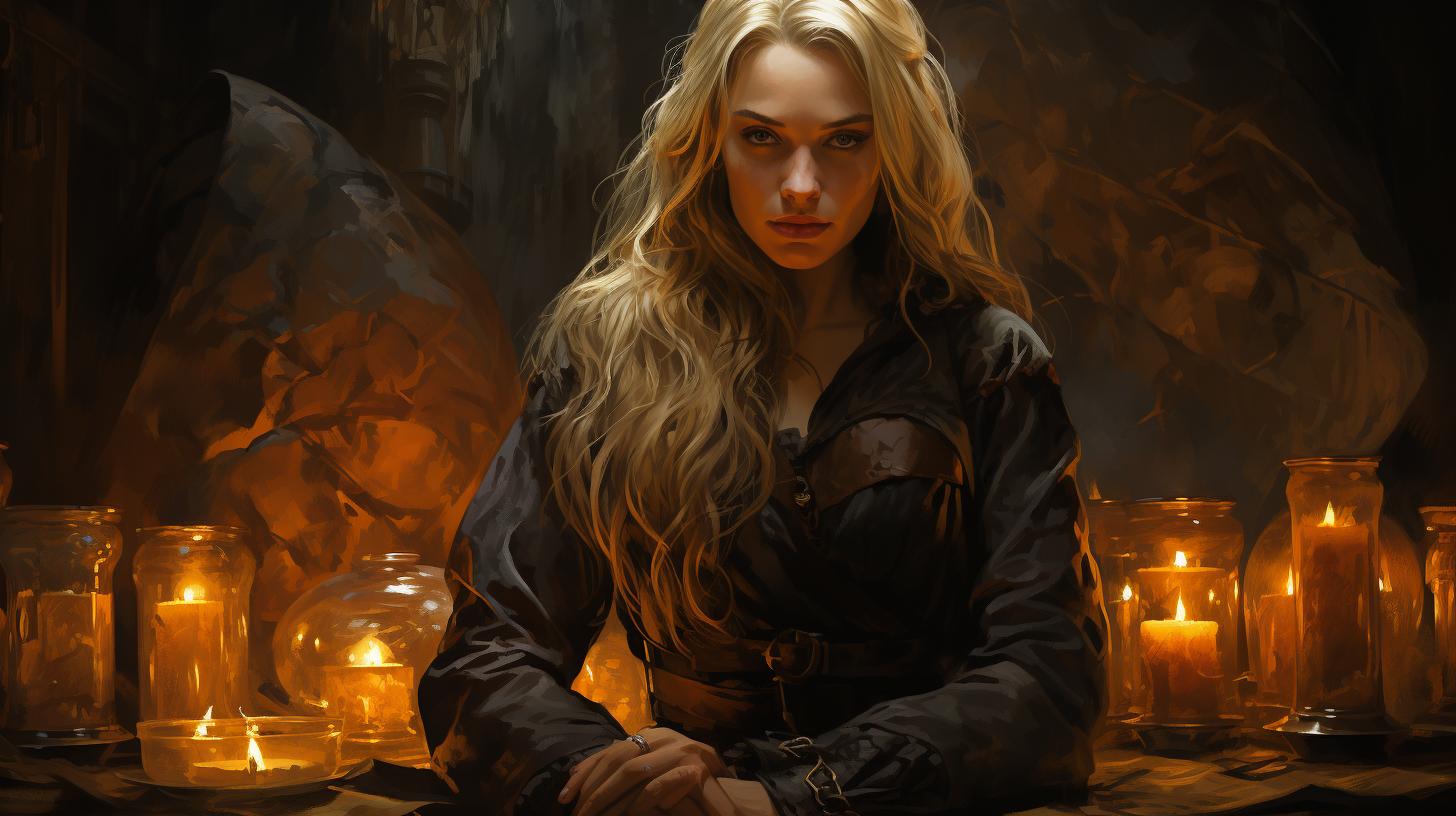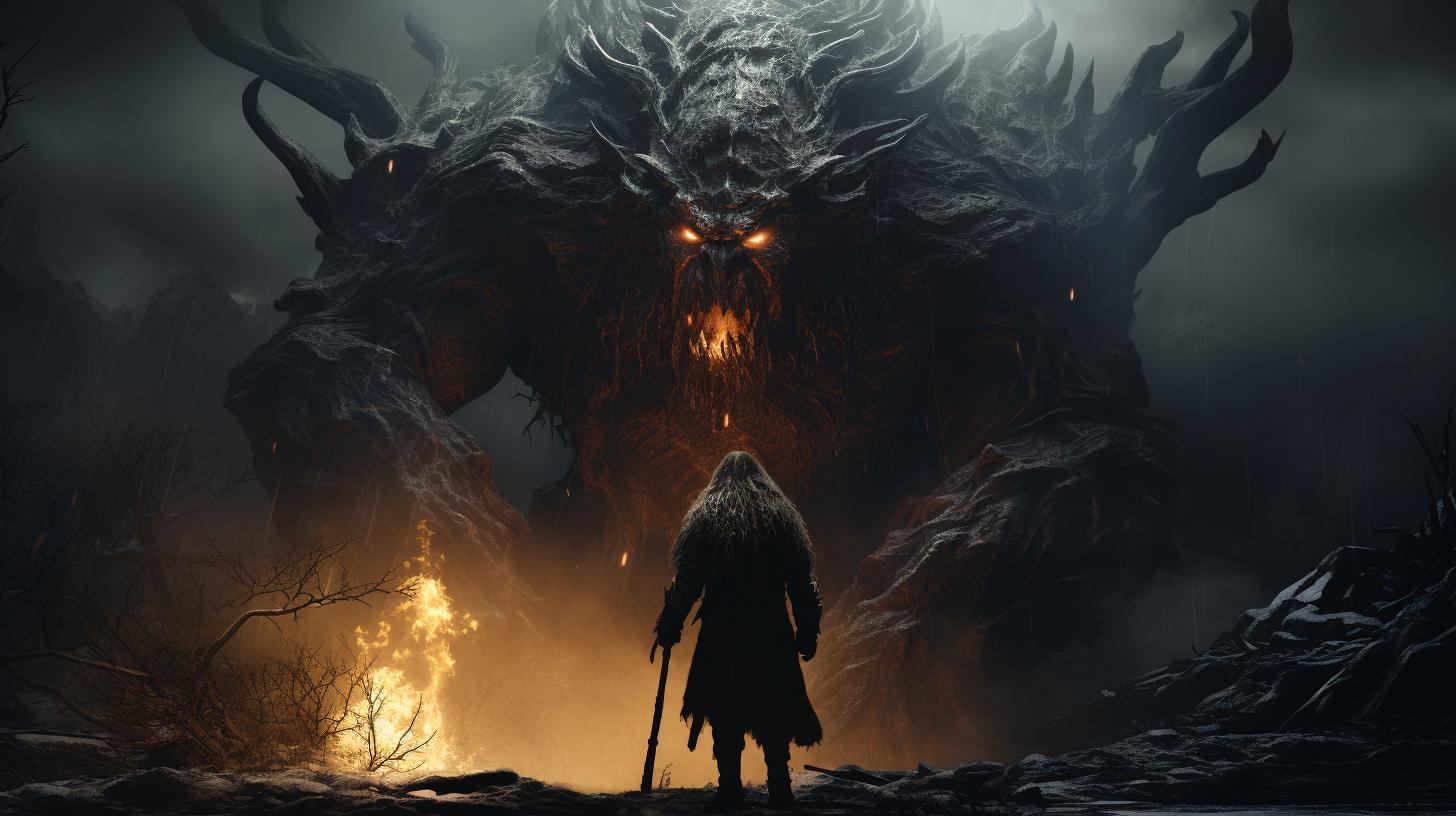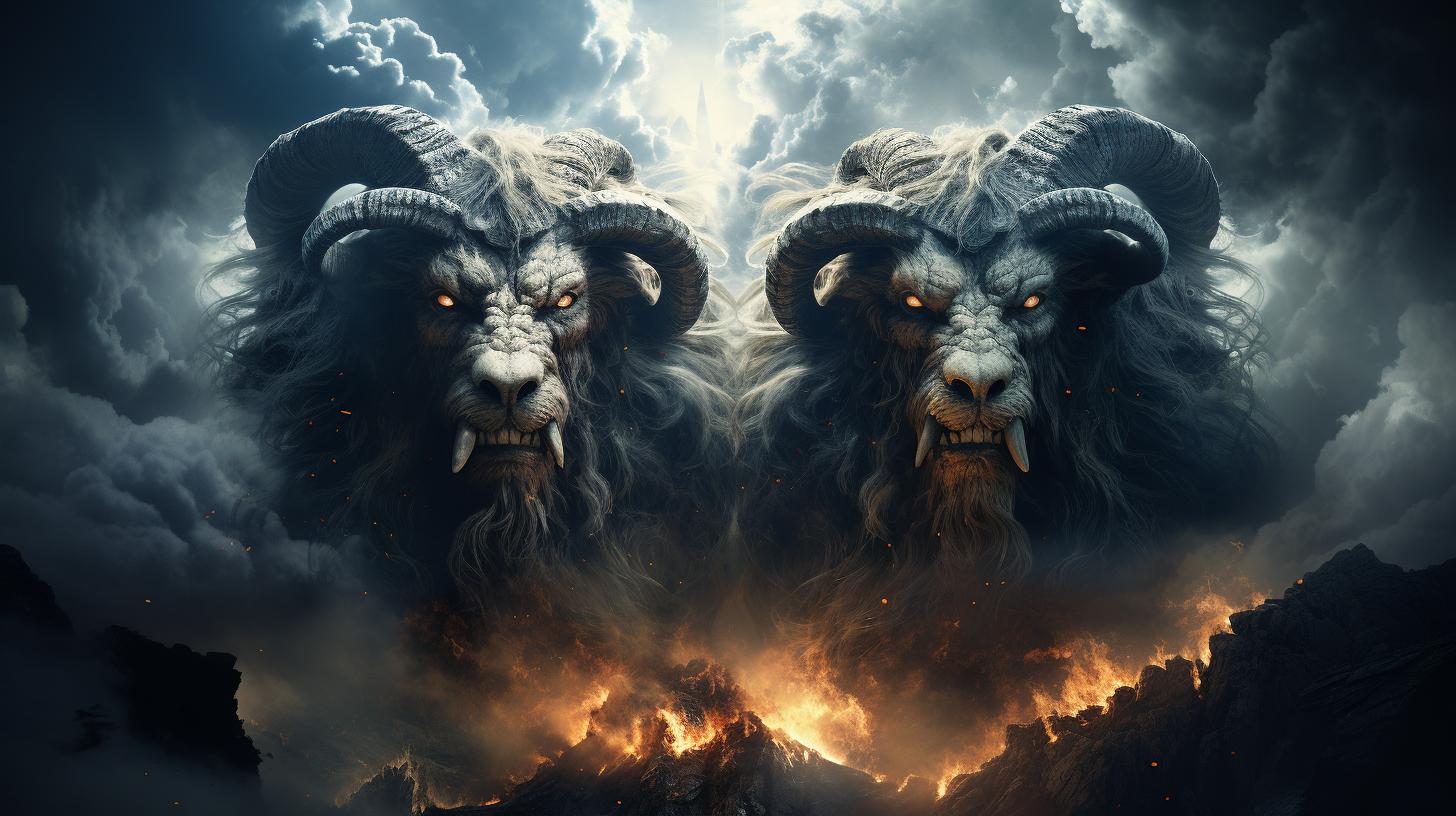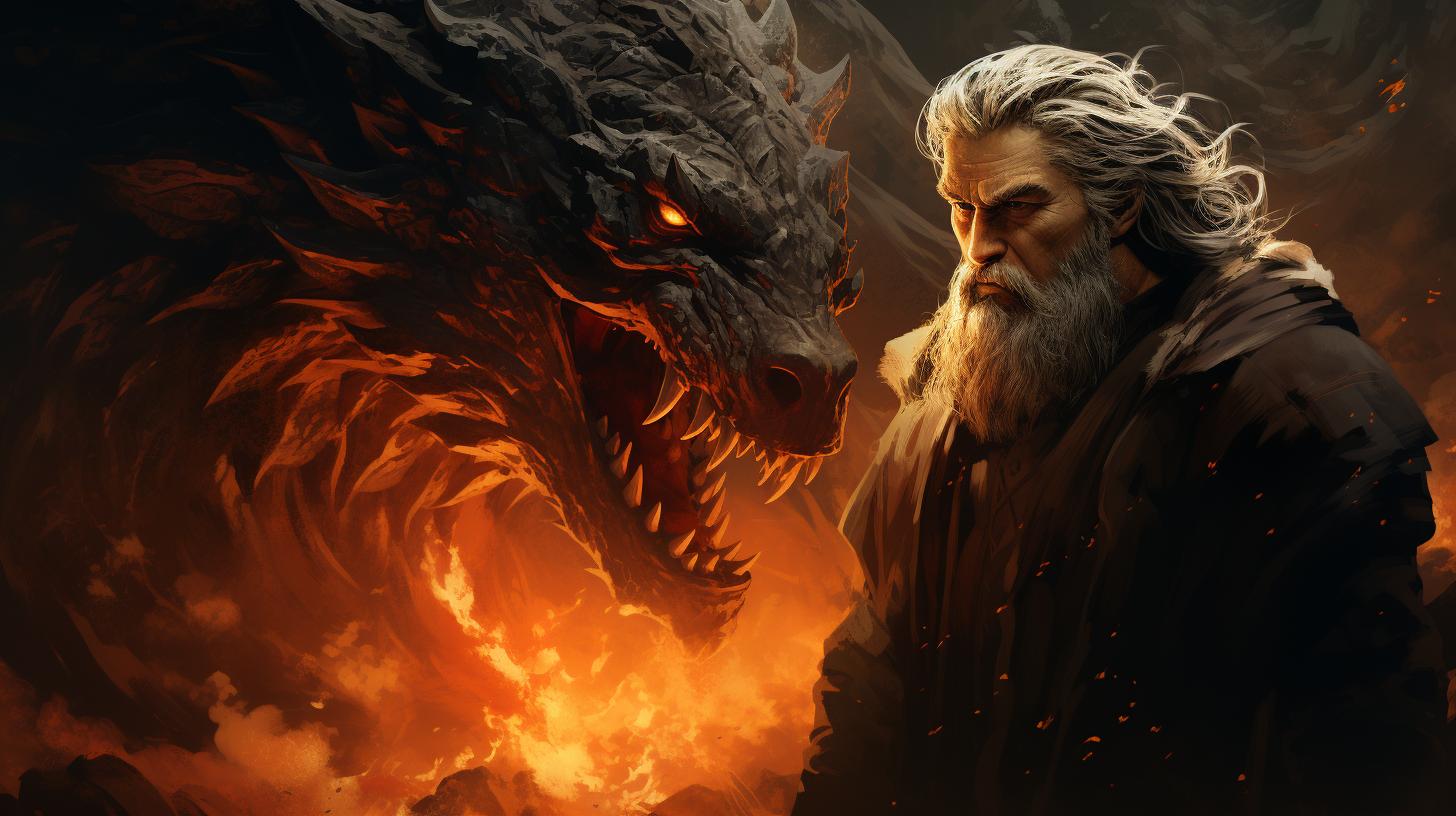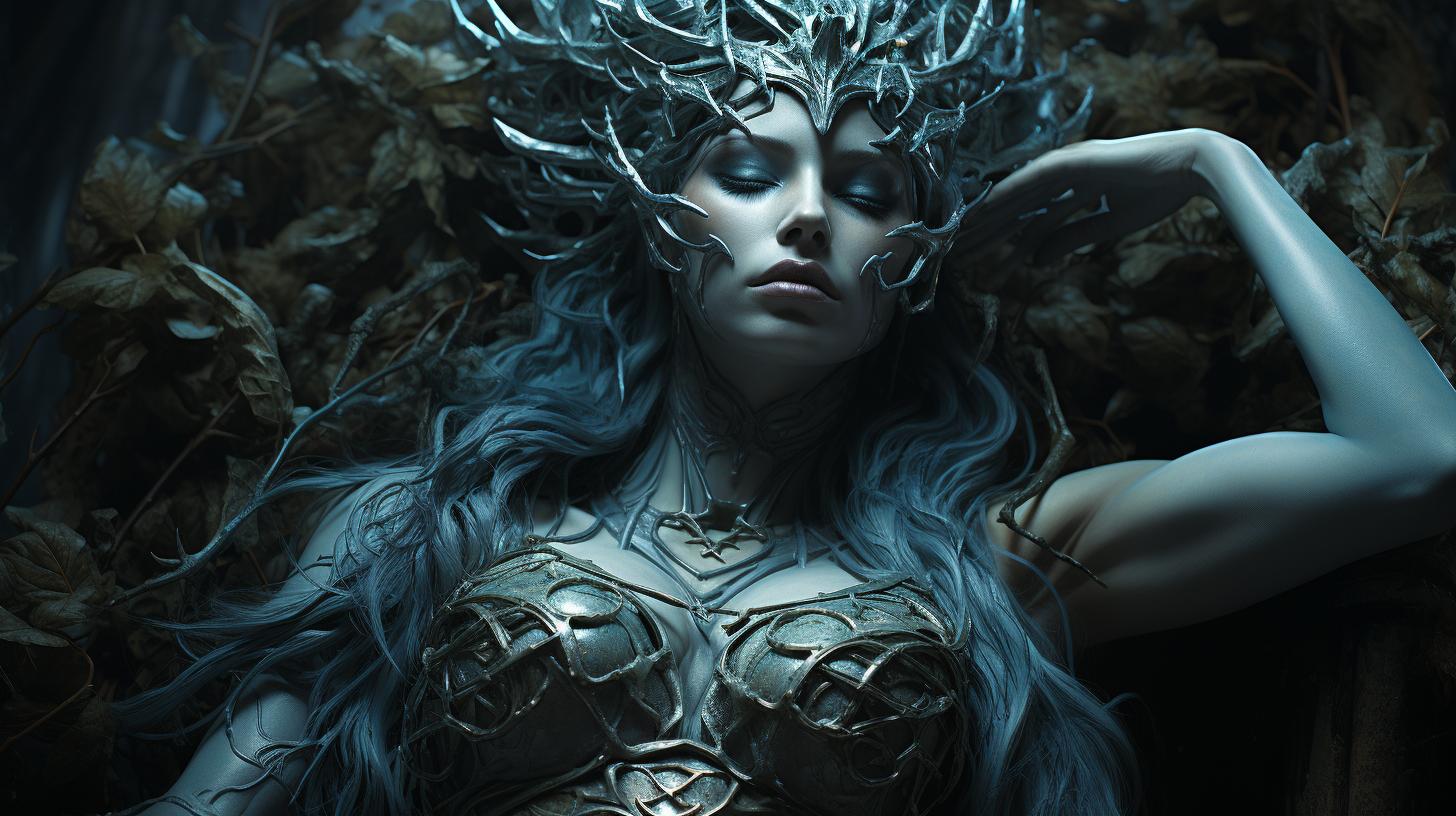Disir Norse Mythology: Powerful Female Deities in Norse Folklore
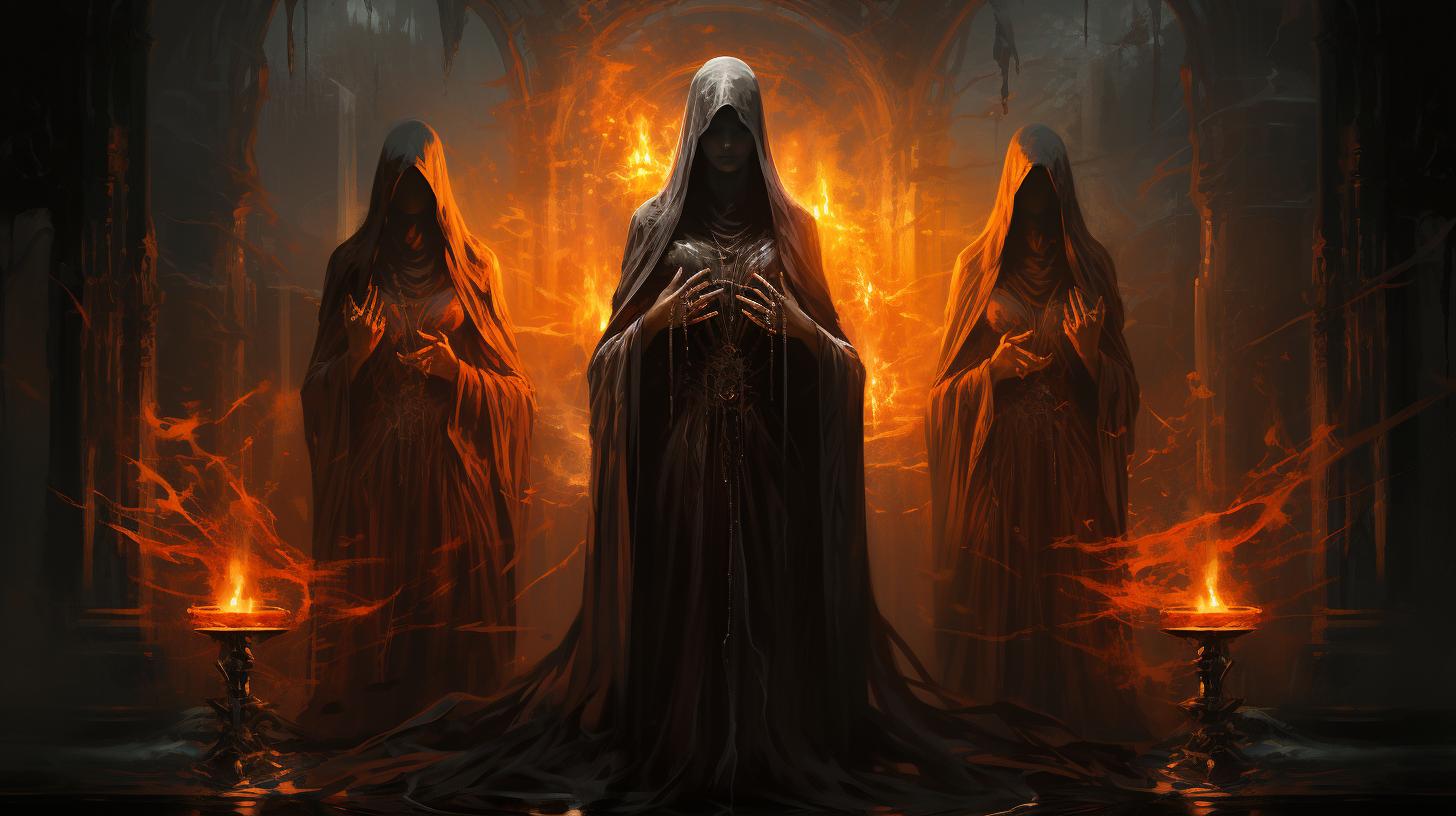
The Disir, powerful deities and spirits in Norse mythology, play a significant role in Old Norse society. These female entities, associated with fate and protection, held a special place in Norse rituals and worship.
They are closely related to Valkyries and Norns, other prominent female figures in Norse folklore. The worship of Disir, including the renowned Disablot festival, exemplified their importance in Norse culture and their role as guardians of families.
Understanding the connections and significance of Disir, Valkyries, and Norns sheds light on the roles and function of women in Old Norse society.
The Disir: Deities and Spirits in Norse Mythology
The Disir hold a prominent position in Norse mythology as powerful deities and spirits.
This section examines their origins, characteristics, role in Old Norse society, and the deep meaning and symbolism associated with them.
Origins and Characteristics of the Disir
The Disir are female entities deeply intertwined with ancient Germanic and Norse belief systems. Although little direct evidence exists of their presence in Anglo-Saxon and continental Germanic mythology, linguistic and mythological similarities suggest a connection between the Disir in Norse mythology and the Idisi of ancient Western Germania.
These divine beings were associated with fertility and were worshipped in both private and official cults known as ‘dísablót.’ Rooted in an Indo-European term meaning ‘to suckle’ or ‘to nurse,’ the term ‘Dis’ suggests a maternal connotation.
The Disir were revered for their protective and nurturing qualities, possibly related to their original association with fertility.
Role of the Disir in Old Norse Society
In Old Norse society, the Disir played a crucial role as guardians and protectors of families and their properties. They possessed the power to act as both benevolent protectors and antagonistic forces towards mortals.
Disir were believed to have influence over an individual’s fate and could mete out punishment to those who failed to offer them proper sacrifices or respect.
While their exact position within the hierarchy of Norse deities remains ambiguous, the Disir were regarded as potent spirits deserving of reverence and respect.
Their presence ensured the well-being and prosperity of individuals, families, and communities.
The Meaning and Symbolism of the Disir
The Disir represent more than just powerful entities in Norse mythology. They hold deep symbolic significance. As symbols of feminine power, fertility, protection, and destiny, the Disir embody the intertwined forces of life, death, and rebirth.
Their association with fate reinforces the belief in a predetermined destiny and the role they play in shaping the lives of mortals.
The Disir also serve as reminders of the crucial role women played in ancient Norse society.
Their presence highlights the respect and importance accorded to women as powerful beings intertwined with the fabric of existence itself. The study of the Disir provides insights into the roles and status of women in Norse culture.
Valkyries in Norse Mythology: Connections to the Disir
Valkyries, powerful female figures in Norse mythology, share both similarities and differences with the Disir. Let’s delve into their roles, significance, and the symbolism associated with Valkyries in Norse folklore.
Valkyries and Disir: Similarities and Differences
While both Valkyries and Disir are considered female entities in Norse mythology, they differ in their specific functions and associations. Valkyries are commonly known as “Choosers of the Slain,” responsible for selecting warriors to serve in Odin’s army in Valhalla.
They are associated with battle, heroic death, and the Afterlife. On the other hand, Disir have a broader role as deities and protective spirits connected to fate and fertility.
Role of Valkyries in Norse Mythology
Valkyries play a vital role in Norse mythology by accompanying fallen heroes on the battlefield and guiding them to the realm of the gods.
They are often depicted as fierce and beautiful figures, riding horses and wearing armor. Valkyries are not only messengers of death but also bringers of glory and honor to chosen warriors.
The Valkyrie Symbol and Its Significance
The symbol of the Valkyrie, often depicted with wings or a spear, represents strength, bravery, and the transcendence of mortality. This symbolizes their connection to the divine realm and their ability to decide the fate of warriors.
The Valkyrie symbol has become iconic in popular culture, representing feminine power and independence.
In summary, Valkyries and Disir share a connection as prominent female figures in Norse mythology. While Valkyries focus on battle and the selection of fallen warriors, Disir have a broader role in the realms of fate and protection.
Understanding their roles and symbolism adds depth to our understanding of the rich mythology surrounding these powerful female entities.
Norns in Norse Mythology: Interactions with the Disir
The Norns, known as the weavers of fate and guardians of destiny, played a significant role in Norse mythology. These powerful female entities were responsible for shaping the course of events and determining the fate of both gods and mortals.
Norns: Weavers of Fate and Guardians of Destiny
The Norns were three sisters named Urd, Verdandi, and Skuld, who resided at the roots of Yggdrasil, the cosmic tree that connected the different realms in Norse mythology. They were believed to carve the destiny of every individual by spinning threads and weaving them into the great tapestry of fate.
Urd, the eldest sister, represented the past, and she held the knowledge of all things that had happened. Verdandi, the second sister, represented the present, and she determined the unfolding events.
Skuld, the youngest sister, represented the future and had the power to shape what was to come.
Norns in Old Norse Literature and Prose Edda
The Norns are mentioned in various Old Norse texts, including the Prose Edda, written by the Icelandic scholar Snorri Sturluson. In this collection of mythological tales, the Norns make appearances in several stories, demonstrating their influence in the lives of gods and humans.
One notable story involving the Norns is the tale of the hero Sigurd, where their involvement ultimately determines his fate and the course of events in his life.
Their presence in such narratives highlights their importance as arbitrators and weavers of destiny.
Comparisons Between Norns and Disir
- The Disir and the Norns share a common theme of being feminine entities associated with fate and destiny.
- While the Disir were generally seen as protective spirits, the Norns held a more active role in shaping and controlling the fate of individuals.
- Both the Disir and the Norns were revered and honored in ancient Norse society, with rituals and festivals dedicated to their veneration.
- While the Disir were closely related to female ancestral spirits, the Norns were cosmic beings with a broader influence.
- The Disir were often associated with familial protection, while the Norns had a broader impact on the destiny of gods and mortals alike.
In conclusion, the Norns played a crucial role in Norse mythology, intricately connected with the Disir and other powerful female entities.
Their ability to weave the threads of fate and determine the destiny of individuals and the cosmos made them integral figures in Norse cosmology. Through their interactions and shared themes, the Norns and Disir contributed to the rich tapestry of Norse mythology and the understanding of the roles of women in ancient Norse society.
Disir Worship and Rituals: The Disablot Festival
The Disablot Festival, a significant event in Norse culture, was dedicated to the worship and honor of the Disir. This festival held deep historical significance and played a crucial role in the religious practices of the Norse people.
Historical Background of Disir Worship
The historical background of Disir worship traces back to ancient Norse society, where these female deities and spirits held prominent roles in religious and cultural practices. The worship of Disir was deeply rooted in the belief in their power and influence over various aspects of life.
The Disablot Festival and Its Practices
The Disablot Festival was a grand celebration held in honor of the Disir. It involved various practices and rituals conducted to pay homage to these powerful female entities. The festival typically took place during a specific time, and its customs varied across different regions of Norse society.
- Offerings and Sacrifices: The festival involved making offerings and sacrifices to the Disir as a sign of reverence and to seek their favor and protection. Animals, such as livestock, were often sacrificed, and their blood was poured as an offering to the Disir.
- Feasting and Merriment: The Disablot Festival was not only a religious event but also a time for communal gatherings and celebration.
Feasting, drinking, and other festivities were commonplace during the festival, creating a sense of unity and camaraderie among the Norse communities.
- Rituals and Ceremonies: The Disablot Festival featured specific rituals and ceremonies to invoke the blessings of the Disir.
These rituals often included chanting prayers, performing sacred dances, and reciting hymns dedicated to the Disir.
Significance of Disir Worship in Norse Culture
The worship of the Disir held great significance in Norse culture, as these powerful female deities and spirits were believed to protect families, homes, and the overall well-being of the community.
Their worship was an integral part of maintaining harmony and balance in Norse society.
- Guardians of Families: The Disir were revered as protectors of families and homes. It was believed that by worshiping and honoring the Disir, individuals could ensure the safety and prosperity of their households.
- Connection to Fate: The Disir were closely associated with fate and destiny.
Norse people believed that by appeasing the Disir through worship, they could influence and shape their own destinies.
- Continuity and Tradition: The worship of the Disir played a vital role in preserving Norse traditions and cultural practices.
The Disablot Festival served as a means of passing down ancestral customs and instilling a sense of identity and heritage in future generations.
The Disablot Festival and the worship of the Disir represented the deep spiritual connection and reverence that the Norse people held for these powerful female deities.
These rituals were not only religious but also served as a way to strengthen the social fabric and maintain a sense of community among the Norse society.
Female Figures in Norse Mythology: Beyond the Disir
Female figures played diverse and significant roles in Norse mythology, extending beyond the realm of the Disir.
This section explores the other goddesses and female entities present in Old Norse traditions, delves into the various roles and functions of women in ancient Norse society, and examines the influences of Disir, Valkyries, and Norns on women’s roles.
Goddesses and Other Female Entities
Within Norse mythology, goddesses occupied positions of power and importance alongside the Disir. These divine female figures held domains over realms such as fertility, love, nature, and war. Goddesses like Freyja, the Norse goddess of love and beauty, and Frigg, the wife of Odin and the goddess of motherhood and marriage, held vital roles within the pantheon.
Other female entities, such as the giantesses and the female dwarves known as Dísir, had roles that intertwine with mythology, often serving as catalysts for epic events.
Roles and Function of Women in Old Norse Society
Women in ancient Norse society held varied roles, extending beyond their presence in mythology.
They exerted influence in familial, social, and economic spheres. While the roles of women were primarily within the household and community, they also had the ability to own and inherit property.
Women played an active part in the agricultural and economic activities of their communities, exhibiting independence and contributing to the family’s overall well-being.
Influences of Disir, Valkyries, and Norns on Women’s Roles
The Disir, Valkyries, and Norns had significant impacts on women’s roles and experiences in Norse society.
As powerful and influential female figures, they served as symbols of strength, protection, and guidance. The Disir, associated with fate and destiny, provided inspiration for women to forge their own paths.
Valkyries, revered for their roles in selecting fallen warriors, inspired women to stand up in the face of adversity, promoting courage and bravery. The Norns, weavers of fate, exemplified the ability to shape one’s destiny and influenced women to seize control of their lives.











